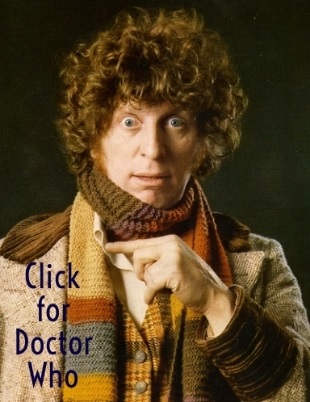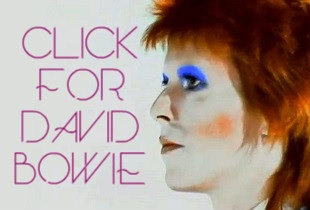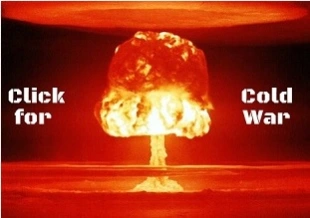Novel idea: Carte Blanche, MI6 Confidential and the continuation of James Bond in print
Master and apprentice: James Bond creator and original author Ian Fleming (left); crime writer and new 007 novelist Jeffery Deaver publicising the spy hero’s latest literary adventure (right)
“The scent and smoke and sweat of a casino are nauseating at three in the morning.” These words ooze glamour, cool and a sense of darkness and danger, do they not? And they’re surely the perfect words to begin, yes, a James Bond novel. But not just any James Bond novel – no, they make up the opening sentence of the very first, Casino Royale. Published in 1953, it was written by former British Intelligence planner and journalist Ian Fleming supposedly as a wedding present for his soon-to-be wife – in actuality, he really produced it as a lighthearted distraction to his impending nuptials. However, the sensation it pretty immediately became and the legacy down through the years it bore were, of course, anything but lighthearted.
Now, all of 58 years since Casino Royale was first published, the book Bond is back through the conduit that is best-selling American thriller author Jeffery Deaver. Yet, far from the first print-based adventure for Bond since Fleming put down his pen, the new novel, Carte Blanche, is in fact the latest in a long line of literary ventures – nay, reinventions – of the world’s least secret secret agent. So, lesser known as it is compared to the cinematic version, just what is the literary Bond’s history and just how did he get to Carte Blanche?
Well, if we go back to the start with Fleming, we’ll discover that, following the first novel’s publication, across the next 11 years the latter produced a further 11 novels and two short story collections featuring his irresistible espionage hero. Then, two years before the author’s untimely death in 1964, under their newly created company, Eon Productions, US film producers Albert R ‘Cubby’ Broccoli and Harry Saltzman delivered the first movie in the ‘official’ series of James Bond cinematic escapades, Dr No. Adapted from Fleming’s sixth novel, it starred the then unknown Sean Connery as 007. The Bond films themselves quickly, of course, took on a life of their own, as they struck an even bigger chord with the public than the novels and surely eclipsed the popularity of their literary forebears.
Bond bound: the first editions – lined up in chronological order – of Ian Fleming’s 12 novels and two short story collections featuring the British hero and global entertainment icon that is 007
Nevertheless, in achieving their enormous (continuing) success, the Bond movies have, if anything, made the novels even more popular and critically, as well as, publicly enduring. In which case, upon Fleming’s death back in ’64, the novels’ publisher Gildrose Publications set for itself the unenviable task of finding another author to take the gauntlet and continue 007’s literary missions – and the baton wasn’t just passed on once; down through the years it was passed on several times (mirroring, if you like, the relay race-like continual casting of the Bond film character).
First to take the challenge was a true literary heavyweight, Kingsley Amis. Writing under the pseudonym Robert Markham, his stab at Bond in the shape of Colonel Sun was published in 1968 and was received well. He was followed by dedicated thriller writer John Gardner, whose 16 efforts – including two novelizations – (1981-96) were perhaps a little bland and lacked the style and glamour of Fleming, but found a very dedicated audience. Next up was the first American to write Bond, Raymond Benson, whose six novels, three novelizations and three short stories (1997-2002), although not always popular with the critics and die-hard Fleming fans, proved popular with the book-buying public.
Following Benson’s take on the character, Ian Fleming Publications – as Gildrose now became known – decided to mix it up for Bond once more, as they turned to another literary household name, Sebastian Faulks (author of the universally acclaimed Birdsong), to deliver the next 007 thriller in commeration of the centenary of Fleming’s birth. The year was 2008, the book was Devil May Care… and many did care, a lot. Sold to the public and the minority (and yet vocal) literary Bond fans as ‘writing as Ian Fleming’, Faulks delivered a novel that turned out to be more pastiche than perfect imitation; it was almost the Bond of the Roger Moore-starring, outer-space flick Moonraker (1979) than that of the hard-edged Casino Royale. Predictably, the results were controversial; the fans weren’t impressed, but the public seemed to lap up the print-Bond once again.
And now we find ourselves in 2011 and the new offering is Carte Blanche. This time it seems Ian Fleming Publications haven’t gone with the author with the awesome resputation, but with the proven genre writer, whose hand on the tiller, they surely hope, will be a dependable one. With his back-catalogue of popular Lincoln Rhyme and Kathryn Dance crime mysteries, Jeffery Deaver certainly seems on, ahem, paper far from a risky bet to take on Fleming’s mantle.
Indeed, lucky get that I am, I attended a ‘Meet the Author’ Q&A session with Deaver in London at the end of May for the launch of the new novel. Fleming fans would surely have been assuaged by the reference he made at this event to who the literary Bond is and what’s always made him so: “There is a scene at the end of the novel Moonraker (1955), where he [Bond] discovers the missile that Drax [the villain] has gifted to England, doesn’t point out to sea, but actually points to a place called London, which some of you may have heard of. He is cut off from help and has no way of warning, so he resolves to light a cigarette under the rocket as it is being refueled, destroying it, but killing himself. Obviously being Bond, he doesn’t have to do that in the end, but he was prepared to. Essentially, I’ve tried to make him as much like Fleming’s Bond as I can. He’s the same sort of age as Bond was in Casino Royale; he’s experienced. I kept a picture of Hoagy Carmichael next to my keyboard as inspiration.”
The reference to Hoagy Carmichael may be the clincher – any Fleming fan worth his salt knows the real-life individual on whom the writer most based his character’s appearance was the former, a once famous American singer and pianist. However, Deaver’s Bond – and the world he’ll inhabit – will certainly differ from Fleming’s in some respects. This 007 will be a modern-day character, not one of the post-war period as he originally was (and was, for instance, in Devil May Care). It means Bond’s now a veteran of the present Afghan war rather than World War Two, he no longer smokes (according to Deaver for no real ethical reason, but because smoking would interfere with his ‘tradecraft’ – a modern-day spook who smokes would stand out) and his mode of transportation has altered (out goes the 1933 modified Bentley sportscar; in comes the beast that is the Bentley Continental GT).
Royale tribute: the cover and villains’ interview spread of the latest issue (#10) of MI6 Confidential – click on the links below for more details and to purchase the magazine
I’m yet to read Carte Blanche (it’s next on my list), but, like I said, the omens look good; Deaver seems to know the scale of the task he’s taken on and, so he said at the London Q&A, is very open to writing more Bond adventures should this one be a success. Good luck to him then, after all, he’s well aware that with writing Bond, an author doesn’t have complete carte blanche: “People don’t read books to get to the middle. A writer’s job is to get you to turn the page and Fleming had that. He kept his stories short and economical, used escalating conflict and kept it lean. Oh, and did I mention the Bond girls? Fleming had his finger on the pulse of what we like. Fine food, drink and beautiful women: these are essential. I think Fleming’s philosophy was, although he never wrote this down, it is evident in his writing, that writing books is all about you guys. And that’s my philosophy, too. In the end you have to write for your audience.”
Speaking of writing for your audience, if you’re a real fan of James Bond, then another relatively new publication may be just up your street. The magazine MI6 Confidential has been going for about a year now and, with its impressive – some never-before-seen – images, as well as exclusive interviews with many folks who’ve played key roles behind-the-scenes on the ‘official’ Eon film series down through the years, it provides a welter of information and entertainment for the reader on the world of 007.
As noted, the very first Bond novel was Casino Royale and 53 years after its first publication, Eon Productions finally got around to releasing their film adaptation. The result was perhaps the most critically acclaimed of their 007 epics and, of course, a huge box-office smash, introducing Daniel Craig to the world as a brand new and yet – to my mind – really quite Flemingian movie Bond. And the latest issue of MI6 Confidential focuses specifically on this most popular of Eon’s epics, featuring, as it does, brand new interviews with the actors behind that film’s villains (Mads Mikkelsen and Jesper Christensen), director Martin Campbell, composer David Arnold, production designer Peter Lamont, costume designer Lindy Hemming, storyboard artist Martin Asbury (as well as his storyboards) and, in a link back to Fleming, an article on the writer’s real-life inspiration for the ‘Casino Royale’ of the novel and film’s title.
After all, it’s inevitable that, whether Sebastian Faulks is doing a pastiche, Jeffery Deaver’s having his protagonist returning from Noughties’ Afghanistan or the marvellous Roger Moore’s winking (and bonking) his way around the Milky Way, in the end James Bond will always find his way back to Fleming. 
~~~
Further reading:
http://www.007carteblanche.co.uk

























Trackbacks